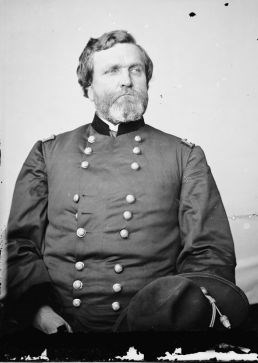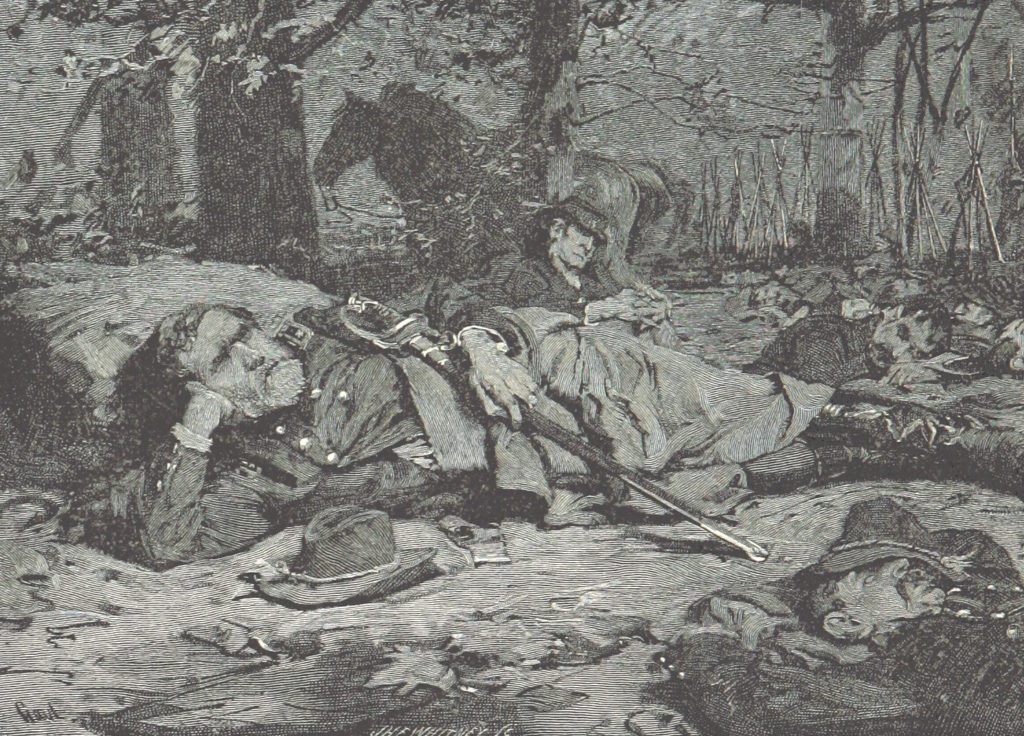
In the retelling of the Civil War, Maj. Gen. George H. Thomas pales in the shadows of Robert E. Lee, Ulysses S. Grant, and other famous leaders, and yet this mighty Union general played a pivotal role in shaping the war west of the Appalachians. Born into a slave-holding Virginia family, Thomas attended West Point, where he graduated twelfth in his class and was commissioned a second lieutenant in Company D, 3rd U.S. Artillery. He served with distinction during the Mexican-American War alongside Braxton Bragg, whom he would face across battle lines two decades later. Thomas went on to be appointed instructor of cavalry and artillery under academy superintendent Robert E. Lee. And then the Civil War broke out. He was offered high-level positions with the Confederate army, but he chose to remain loyal to the Union—a fact that created a rift within his family and stirred the annals of history. His former pupil and fellow Virginian J.E.B. Stuart shared with his wife: “I would like to hang, hang him as a traitor in his native state.” And yet, Thomas’s profound tactical understanding of warfare elevated him to a great warrior. He’s a fascinating character, one that prolific author and award-winning historian Brian Steel Wills has profoundly studied, and one that is the focus of his upcoming tour “America’s Greatest Warrior? General George Thomas and the War in the West,” which traces many of Thomas’s most important campaigns. We caught up with Wills to ask him about his fascination with George Thomas, as well as what participants should expect on this expert tour.
BGES Blog: Please give us the three-sentence description of your tour.
BSW: This tour will represent an examination of the highlights of an extraordinary Union general in the Western Theater of the American Civil War. Virginia-born and West-Point-trained George Henry Thomas remained with the old flag and provided a crucial contribution to Union victory. His performance at Mill Springs early in the war demonstrated capabilities that he continued to develop and exhibit subsequently throughout the war.
BGES Blog: What should attendees expect on your tour? What are some tour highlights? Can you give us a quick vignette that might give us a flavor of the tour?
BSW: Attendees in this tour will walk the ground over many of the crucial engagements in which General Thomas participated, allowing us to examine the general’s actions and contributions on such fields as Stones River, Chickamauga, Missionary Ridge, Kennesaw, and Nashville. Although deemed to be slow and methodical by many of his contemporaries, they also considered Thomas to excel in the defensive. Yet, he proved himself a powerful commander in the offensive as well. Thus, “Old Slow Trot” could become the “Sledgehammer of Nashville” as well as the “Rock of Chickamauga,” his most famous nickname.

BGES Blog: What is it about George Henry Thomas that most captivates you? Do you have a personal connection?
BSW: As his Southern birth and Northern service suggested, George Thomas was a complicated individual who faced a similar choice to that of Robert E. Lee and others who went with their native state and fought for the Confederacy. This intriguing element and his significance in the war’s most important theater of operations made him compelling to me. I have always found biography appealing. The desire to get into the personality and character—to see what makes someone “tick”—is part of that attraction, no less so with Thomas. The general also came from the neighboring county of Southampton to mine in Virginia (old Nansemond, now Suffolk).
BGES Blog: Why did history not shed more light on him? Was he cheated by history?
BSW: Thomas has actually had a number of biographers and supporters over the years, from just after the war to the present day. Even so, he fell under the shadow of figures such as Ulysses Grant, William T. Sherman. and others who projected themselves onto larger stages. Thomas had no political aspirations and felt less need to bring attention to himself. He genuinely believed the actions of his army (“my men made me”) would speak for itself. He maintained that history would “do him justice,” and that process is ongoing. I have tried to contribute with my biography on him. Many of the other studies also made a point of elevating Thomas at the cost of denigrating others. I considered it more productive to understand such relationships that included a friend and associate, Sherman, who could not bring himself to say something complimentary without something derogatory at the same time: “He may be slow, but he is as true as steel”; or Grant, who waged war very differently than his subordinate and acted accordingly toward him. Part of this tour will include examining these relationships in the field where they developed.
BGES Blog: Why this tour? What will you offer that the others won’t?
BSW: Just as every tour has the goal of advancing our knowledge about some aspect of history, so this one focuses on a figure of importance in our understanding of the greatest conflict that pitted American against American. The Revolutionary War certainly had a similar aspect, but the scope of the American Civil War was unparalleled. Examining and assessing the role George Thomas played gives us insight into many elements from the battlefield to larger social implications and contexts.
BGES Blog: What on-the-ground elements are you excited to share with tour participants?
BSW: As those who study history closely know, there is no substitute for going to the sites of engagements. Books and maps provide important context, but the opportunity to study the ground and conditions is key to our understanding as much as we can from such situations. Walking in the footsteps of such giants of history makes those pages come alive.

BGES Blog: What do you hope your tour adds to the overarching discussion about what the Civil War means today?
BSW: There are always ebbs and flows in public and scholarly interest in any subject. The necessity of knowing more of our collective history in any environment is fundamental to having a better sense of who we are and the journey we have taken to get where we are today. At a time when it is easy to dismiss historical figures and periods, especially those with the complexities of the Civil War, this quest is as essential as ever.
BGES Blog: Any final words?
BSW: Forrest–Custer–Stuart–Jackson–Lee–Grant. Each of these personalities flashed their brilliance. In a different, yet decisive fashion, George Thomas did as well. No figure of the Civil War could top him in the admirable attributes of duty, honor, loyalty, and service.
BGES Blog: THANK YOU!!
